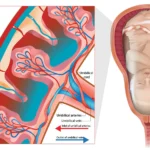Test tube baby!!! It’s just another name for IVF (In Vitro Fertilization), which is a successful fertility treatment option for couples who are unable to conceive naturally.
The process of making “Test Tube Baby” is known as the artificial method of making the baby. If you are one among those infertile couples and your doctor suggested you to go for a test tube baby, then you have come to the right place.
This article gives you detailed information about the process of making a test tube baby, which makes your dream of having a child come true with innovative and advanced technology. There is nothing to worry about it!! Let us know how a test tube baby is produced successfully!!
What is Test Tube Baby?
Test tube baby is a common word used in the reproductive biology of human beings. It is the artificial method used for in-vitro fertilization to make a baby. It is like a fortunate thing for couples who are infertile due to blocked fallopian tubes or who cannot conceive naturally or male partner exhibiting less sperm count or mobility.
The process of making Test Tube Baby:
It is completely a safe and a scientific approach to conceiving. Here is the detailed process:

Ovaries stimulation and collection of eggs:
Through natural ovulation process or through using fertility medication, ovaries are stimulated to produce healthy and matured eggs. Your doctor may perform an ultrasound to know the performance of eggs doing inside the womb.
If your doctor feels that your eggs are matured well, you will be given HCG injection below your navel to collect the eggs. These healthy and matured eggs are collected from the ovaries using a hollow needle. This whole process is performed by placing you under local anesthesia.
Sperm collection:
Once your eggs are collected, they are further processed in the laboratory. Mean while, your partner is asked to submit his semen sample!! Good and healthy sperms are collected from his semen. These sperms are washed thoroughly and finally make healthier sperm that is ready for fertilization.
In-Vitro Fertilization:
Healthier sperms are made to combine with the harvested eggs under laboratory conditions in the incubator. The process of in-vitro fertilization is called as insemination. Fertilization takes place after a few days in the lab. Eggs are monitored thoroughly to check whether fertilization process is successful or not. After fertilization, the fertilized eggs are termed as ’embryos’.
Embryo Transfer:
Embryos usually take 4-5 days to grow but the chances of getting pregnancy are less with 4 days old embryo. Therefore, it is better to wait 7 days until the embryo reaches the blastocyst stage. The blastocyst stage of the embryo is good for transferring into the womb. On an average, generally, 3 IVF cycles are required to get pregnancy.
Your doctor may wait for 1-2 weeks after embryo transfer to check pregnancy confirmation through ultrasound. Once the procedure is done successfully, you are asked to go home after 2-4 hours.
In case, any failures occur in the implantation of the embryo, you are suggested to repeat the last step of embryo transfer once again after 2-3 months.






